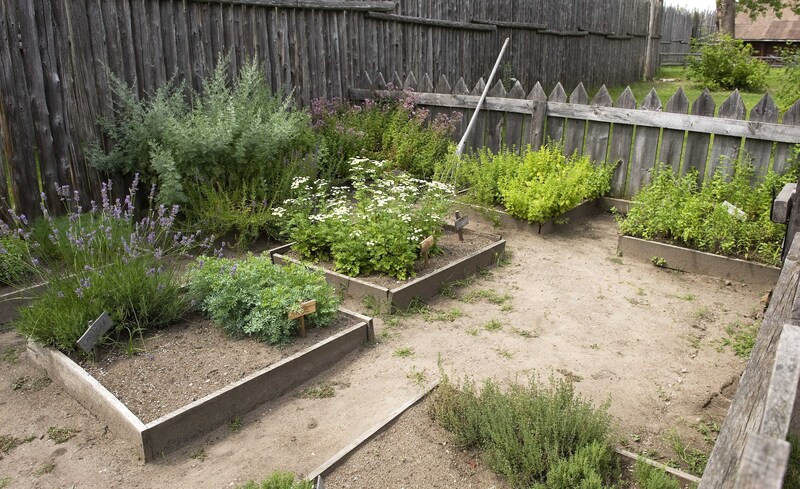Gardening as a Pathway to a Climate-Stabilized Future
Posted on 22/06/2025
Gardening as a Pathway to a Climate-Stabilized Future
The effects of climate change are becoming increasingly visible in our everyday lives. From extreme weather events to declining biodiversity, the challenges seem daunting. While systemic shifts and technological innovations are essential for addressing global warming, individual and community-level actions play a significant role. Gardening as a pathway to a climate-stabilized future is one of the most accessible--and impactful--actions we can take. This comprehensive article explores how gardening promotes climate resilience, stabilizes the environment, and empowers communities for a sustainable tomorrow.
Understanding the Connection Between Gardening and Climate Stability
Most people recognize gardening as a relaxing hobby or a means to grow fresh food. However, its benefits extend far beyond personal enrichment. Thoughtful gardening practices can reduce greenhouse gas emissions, sequester carbon, and support biodiversity. By transforming urban and rural spaces into thriving green sanctuaries, we collectively create a buffer against climate extremes.
Why Does Climate-Stabilized Gardening Matter?
Our current industrial food systems and widespread urbanization have dramatically altered natural landscapes. These changes contribute to:
- Greenhouse Gas Emissions: Conventional agriculture and landscaping practices are significant sources of CO2, methane, and nitrous oxide.
- Loss of Biodiversity: Monocultures and the destruction of native plant habitats reduce resilience to climate shifts.
- Soil Degradation: Erosion and loss of organic matter limit the land's natural ability to store carbon.

How Gardening Supports a Climate-Stabilized Future
1. Carbon Sequestration in the Garden
Perhaps the most significant contribution of gardening to a climate-stabilized future is carbon sequestration. Plants absorb atmospheric CO2 through photosynthesis, locking carbon into their tissues and the surrounding soil. Gardening for climate action prioritizes methods that boost this natural process.
- Perennial Plantings: Replacing annuals with perennials--such as fruit trees, berry bushes, or native grasses--keeps carbon underground for longer.
- Mulching and Composting: Organic mulches and compost add carbon to the soil, improve structure, and enhance microbial activity.
- Reduced Tillage: Minimal disturbance preserves the soil ecosystem and its carbon content.
By focusing on soil health, climate-forward gardeners transform their landscapes into powerful carbon sinks.
2. Reducing Home Food System Emissions
Growing your own fruits, vegetables, and herbs brings environmental benefits beyond carbon sequestration. Consider the typical journey of store-bought produce:
- Transportation: Fruits and vegetables often travel thousands of miles, relying on fossil fuels.
- Pesticides and Fertilizers: Many commercial farms use synthetic inputs, which emit greenhouse gases during production and application.
- Packaging Waste: Plastic and other materials contribute to landfill overflow and pollution.
A climate-conscious garden provides a local, sustainable, and low-carbon source of food. With organic techniques and smart planning, you can significantly lessen your household's environmental footprint.
3. Enhancing Water Resilience
Water scarcity and irregular rainfall patterns are major threats in a warming world. Gardening for a sustainable climate promotes practices that conserve and efficiently use water:
- Rain Gardens: Capture and filter stormwater runoff, reducing flood risks and recharging groundwater.
- Drip Irrigation: Provides moisture directly to plant roots, cutting water waste.
- Xeriscaping: Emphasizes drought-tolerant, native species to thrive with minimal irrigation.
With intentional landscaping, gardens become vital players in water conservation efforts, supporting long-term climate stabilization.
4. Creating Biodiversity Havens
Loss of habitat and species diversity weakens nature's resilience to environmental stress. A climate stabilizing garden incorporates:
- Pollinator-Friendly Plants: Support bees, butterflies, and other beneficial insects essential for ecosystem health.
- Native Species: Adapted to local climates, these plants require less intervention and provide food/shelter for native wildlife.
- Layered Planting: Trees, shrubs, and groundcovers mimic natural systems, boost carbon storage, and shelter wildlife.
Gardens act as crucial micro-reserves, boosting biodiversity and creating interconnected green corridors across cities and communities.
Adopting Regenerative Gardening Practices for Climate Action
Regenerative gardening is an approach focused on rebuilding ecosystem health. Rather than simply "sustaining" the status quo, these methods restore soil, water, and plant vitality--helping reverse climate impacts.
Key Elements of Climate-Conscious Regenerative Gardening
- No-Dig or Low-Till: Preserve soil carbon and structure, reducing the release of greenhouse gases.
- Cover Cropping: Planting fast-growing greenery in off-seasons feeds soil microbes and keeps carbon underground.
- Organic Mulching: Retains moisture, adds nutrients, and cools the soil to counteract urban heat islands.
- Composting: Turns kitchen and yard waste into nutrient-dense fertilizer--cutting landfill emissions.
By practicing these regenerative techniques, anyone can turn their backyard, balcony, or community garden into a climate stabilization hub.
Role of Native and Drought-Tolerant Plants
Native and drought-hardy species require less irrigation, fertilizer, and care over their lifespan. These plants are ideal for climate-resilient gardens, offering multiple advantages:
- Lower water and maintenance needs
- Improved habitat for local pollinators and wildlife
- Adaptation to changing regional weather patterns
Urban Gardening: Cities as Climate Solutions
With over half the world's population living in cities, urban gardening has immense potential to drive climate stabilization on a global scale.
Benefits of Urban Green Spaces
- Mitigating Urban Heat Islands: Vegetation cools surrounding air, reducing energy demand for air conditioning.
- Improved Air Quality: Plants filter particulates and absorb atmospheric pollutants.
- Community Resilience: Community gardens foster social bonds and collective action against local climate threats.
- Space Efficiency: Rooftop and vertical gardens maximize greening in limited areas, amplifying climate benefits.
Examples of Urban Gardening for a Stable Climate
From city park pollinator gardens to school vegetable patches and rooftop farms, urban gardening projects:
- Sequester measurable amounts of carbon
- Reduce urban flooding through improved soil absorption
- Connect residents to sustainability education
Empowering Communities for Climate-Forward Gardening
Lasting climate stabilization requires collective shifts, not just individual choices. Community-driven projects and policy support are vital for wider adoption of climate-friendly gardening.
Education and Awareness
Workshops, demonstration gardens, and local organizations provide vital information and support. Key topics for community education include:
- Composting and soil regeneration
- Water-wise gardening techniques
- Identifying and propagating native plants
Garden Sharing and Cooperative Models
Collaboration enhances access and amplifies impact:
- Seed swaps and plant sharing events diversify local plant genetics
- Tool libraries reduce material waste and lower the barrier for new gardeners
- Community-supported agriculture (CSA) models connect growers and consumers directly
Policy and Institutional Support
To truly scale gardening as a climate action, policy measures must support:
- Creation and protection of community green spaces
- Funding for climate-stabilized landscape projects
- Incentives for urban agriculture and pollinator corridors
Gardening Innovations for a Climate-Stabilizing Future
Modern strategies can enhance traditional gardening's climate impact:
Integrating Technology and Data
- Smart Irrigation Systems: Use weather data and soil sensors to minimize water waste.
- Climate-Resilient Plant Breeding: Scientists develop more drought- and heat-tolerant varieties.
- Garden Mapping Apps: Help track carbon sequestration and biodiversity gains.
These tools enable more efficient, impactful gardening for a climate-stabilized future.
Permaculture Principles
Permaculture--a system of designing human habitats for sustainability and resilience--prioritizes:
- Closed-loop systems: Recycle energy and nutrients within the garden
- Polycultures: Mix diverse crops for improved pest resistance and carbon capture
- Stacked functions: Each plant or structure serves multiple climate and ecological purposes
Overcoming Barriers to Climate-Stable Gardening
Despite its promise, many face challenges in implementing climate-forward gardening:
- Limited space: Use container gardening, vertical planters, or participate in community plots
- Lack of knowledge: Tap into online resources, local workshops, and social networks
- Resource limitations: Start small, prioritize soil improvement, and build gradually

Gardening as a Personal and Collective Climate Responsibility
Choosing to garden with climate stabilization in mind is both an act of personal empowerment and collective responsibility. Every plot of green, every pollinator planted for, and every cubic foot of composted soil strengthens our resilience to climate disruptions.
Key benefits to remember:
- Gardening sequesters carbon and counteracts greenhouse gases
- Homegrown food reduces agricultural emissions
- Healthy soils and diverse habitats combat biodiversity loss
- Urban gardens cool cities and conserve water
- Community projects spark widespread, real change
By embracing gardening for a climate-stabilized future, we harness nature's most effective solutions--restoring balance, fostering hope, and building a stable tomorrow from the ground up.
Getting Started: Simple Steps for Climate-Conscious Gardening
- Start small--even a few pots on a windowsill make a difference
- Choose native plants and organic practices for low-maintenance climate benefits
- Compost kitchen and yard waste to boost soil carbon
- Join or support a local gardening group or community patch
- Share your knowledge and invite others to participate
Every garden is a seed of climate hope--and together, our collective efforts can nurture a cooler, greener, and climate-stabilized future for generations to come.

